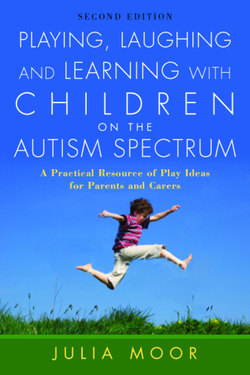Читать книгу Playing, Laughing and Learning with Children on the Autism Spectrum - Julia Moor - Страница 68
На сайте Литреса книга снята с продажи.
Using digital photography to assist understanding and choice making
ОглавлениеPhotos are great to act as prompts to remind children where things are in the house and create a greater sense of independence, from collecting their own cutlery to finding clean pyjamas. You can place wallet size pictures on drawers, cupboards, storage boxes and play cupboards. As your child gets older you can help him recall the toys he has and make positive choices by taking pictures of activities, books, film covers and games and placing them in an album of activities that he might choose to do in his ‘free time’. This type of strategy bridges the gap in his imagination when he tries to think what to do next and may get locked into a repetitive routine simply as a means to fill in time.
You can also use photos to show your child how to do a particular activity such as setting the table (e.g. a photo of the finished place setting) or planting a seed. Your child can then follow the picture independently, giving him a greater sense of autonomy and removing the frustration of following more ambiguous verbal instructions.
You could try compiling a ‘trading card’ style game for friends and family by putting some information under the picture such as favourite colour/date of birth/favourite animal, etc. Often children with autism enjoy collecting this type of data and it gives them a strong sense of familiarity with the person on the picture as well as a good conversation starter when they see them in real life! Photos of friends and family are great for all sorts of events: for cueing a child ready for a visit, for letting them know who’s on the telephone, or for showing your child who is sitting where for Christmas dinner.
